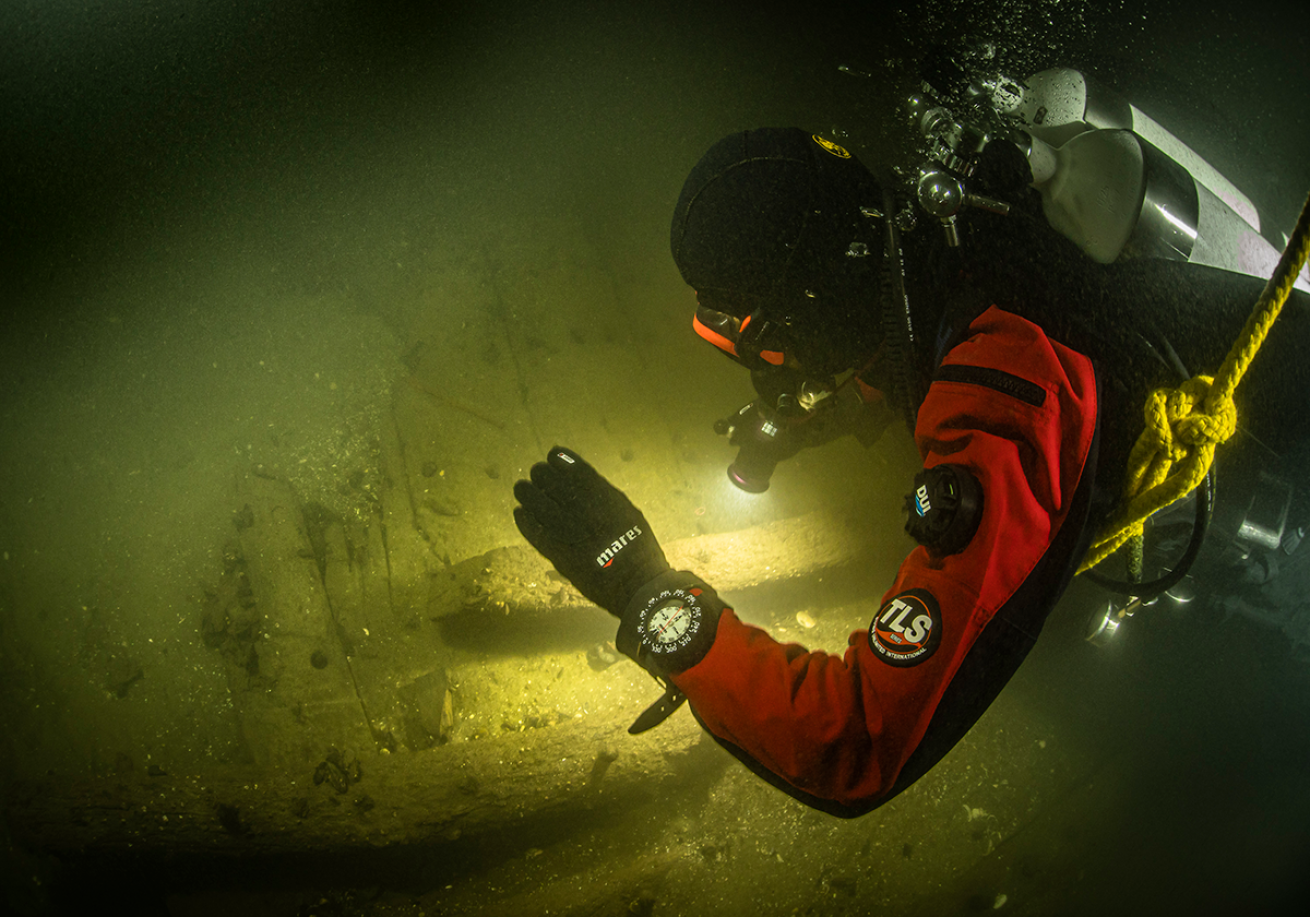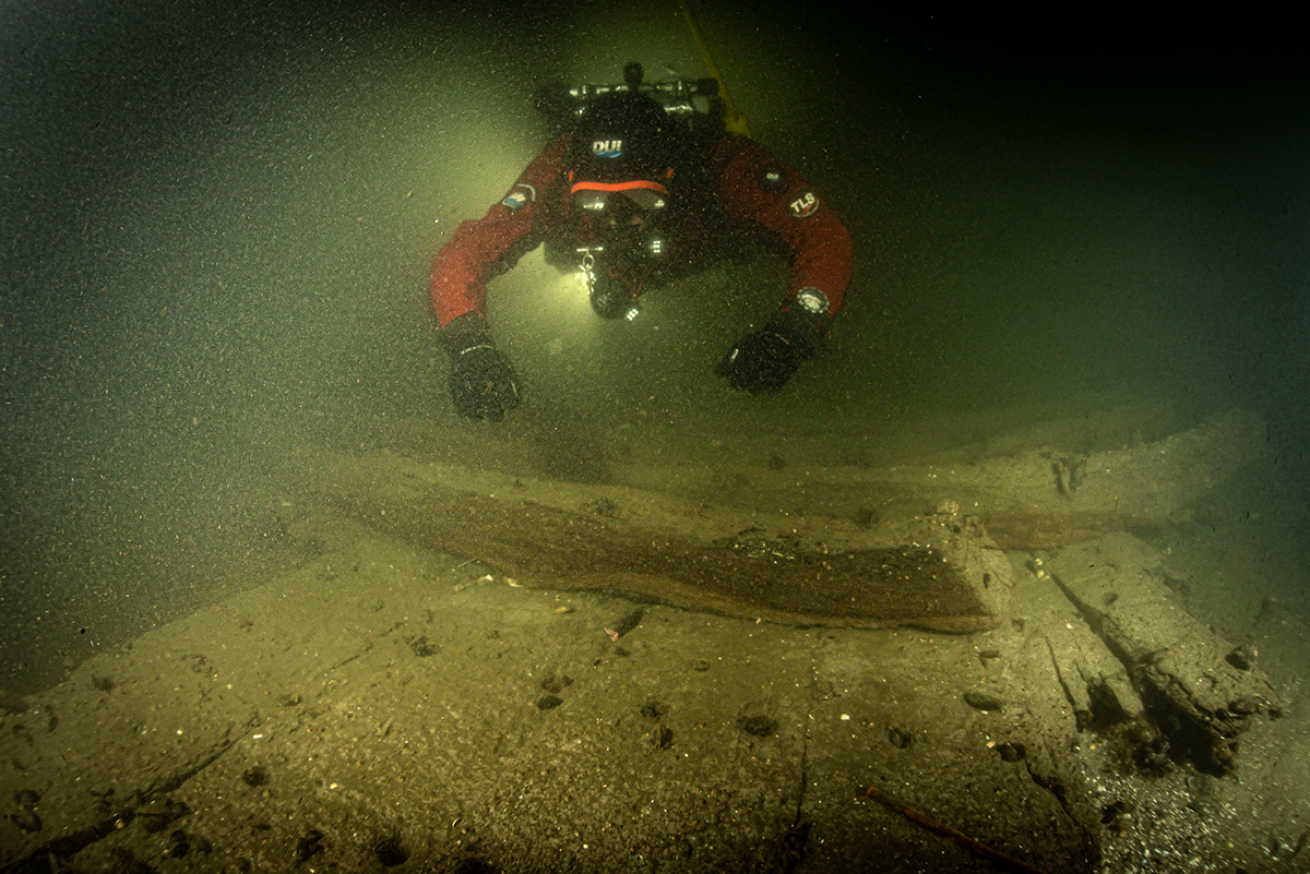400-Year-Old Wreck Discovered Well-Preserved in German River

Christian HoweA research divers inspects the recently-discovered rive wreck.
Maritime archeologists in northern Germany have discovered a rare, 400-year-old shipwreck that is almost perfectly preserved.
The wreckage lies about 36 feet deep in a predominantly saltwater stretch of the river Trave, which flows between the city of Lübeck and the port of Travemünde on the Baltic Sea. Authorities of the navigable channel in Trave first located the ship during a 2020 routine sonar survey.
Historians and archaeologists believe the ship harkens from the Hanseatic period, when northern European trade guilds sailed the Baltic and North seas. This time frame ranges from the 13th to 17th centuries.
The original ship may have been a galliot, a single-masted cargo ship common during the Hanseatic period, lead maritime archeologist on the project Fritz Jürgens tells Live Science. He estimates the original ship measured between 66 to 82 feet long. Historians uncovered a letter in the Lübeck historical archives mentioning a galliot that ran aground in the river in Dec. 1680. Carbon-dating of the wreck’s timbers revealed tree rings from trees felled in the 1650s. This fits with what is known of the Trave shipwreck, Jürgens said.
Overall, the wreck is notable due to this cargo and its remarkable state of preservation. Most wooden shipwrecks in the region have decayed or been colonized by the saltwater clam Teredo navalis, commonly known as “shipworm.” The bivalve rapidly eats submerged wood and destroys wooden shipwrecks in the western Baltic, where this wreck sits, said Jürgens. Therefore, shipwrecks of this age and condition are almost never found here, he said.
Maritime archeologists believe the wreck’s wooden hull and the cargo barrels were quickly engulfed by a protective layer of fine mud from the river. This thick coating over the vessel may have prevented rot and shipworm infestation.
"There are still about 70 barrels in their original location on the ship, and another 80 barrels in the immediate vicinity," said Manfred Schneider, the head of Lübeck's archaeology department and a project leader working to salvage the ship. "The ship, therefore, sank almost standing and did not capsize."
The 150 wooden barrels on and near the wreck indicate that the ship was carrying quicklime, which is made by burning limestone, from Scandinavia to be used in stonework, likely in Lübeck.

Christian HoweA diver hovers over the remains of what is believed to be the Trave.
Although Lübeck was a Baltic trade center during this period, few maritime artifacts have survived to the present. Therefore, discovery of an intact ship, which may contain everyday objects beneath the mud, feels remarkable, Schneider said. "We have something like a time capsule that transmits everything that was on board at that moment," he said. "It throws a spotlight on the trade routes and transport options at the end of the Hanseatic period."
Project leaders plan to raise the entire ship from the riverbed over the next few years. At that point, archeologists will fully investigate the hull and its construction, which may reveal the ship’s true origins.










